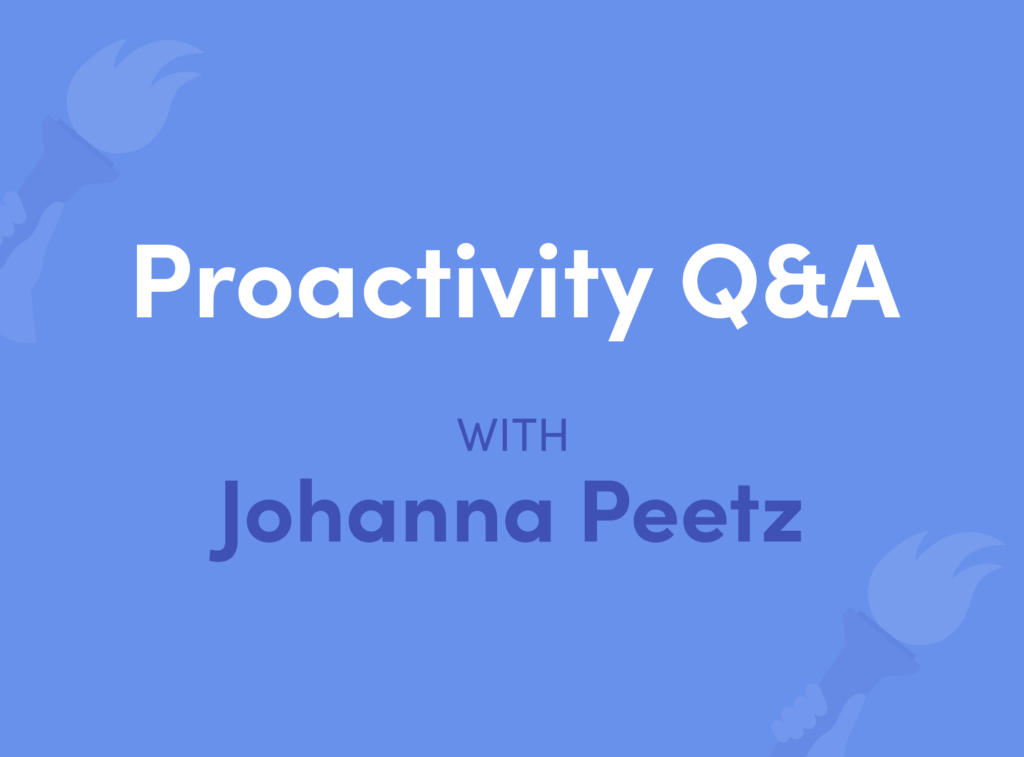
Johanna Peetz, a psychology professor at Carleton University, talked to us about how to foster proactivity. Here are a few highlights:
We define proactivity as taking initiative. Why is proactivity so important?
It’s often harder to get started than to keep going on a task. And the closer you get to achieving a goal, the easier it gets. So you could argue that the hardest part of reaching a goal is getting started. Research shows that there are times when it’s easier to get started—for example, when you feel like it’s the beginning of a new era. “Today is the first day of the rest of your life”—that cliché is actually helpful. If you feel like today is the start of a new time period, you are more motivated to start working toward goals.
How can parents and teachers help kids get started on projects?
Saying “just do it” isn’t very useful when you feel overwhelmed. It helps to break things down into smaller steps and tell yourself consciously, “All I’m doing today is getting started on the first step, and I’m not going to worry about the rest. Today is a good day for getting started.” Once you’ve done the first small thing, the next small thing is easier to do. The next day, you can say to yourself, “Today is a good day to get started on step two.” Before you know it, you’ve completed the whole task.
Sometimes parents see a project due in a week and think their kid should be working on it, but the kid thinks there’s no rush. What’s a good way to talk about deadlines?
The two different viewpoints—feeling a sense of urgency when a task is due in a week or feeling like there’s still a lot of time left—are both totally valid. There’s only a problem if people clash in those views, when one person feels like, “Why are they not working on this? They should be doing things because they only have a week,” and the other person thinks, “It’s not due for a whole week. What’s the rush?” I think the best way to bridge the gap is to talk about the difference in perception and set deadlines you both agree on. You have to be very explicit about what the kid plans to do and when they plan to do it to avoid miscommunication.
How can parents and teachers help kids manage their time for long-term projects?
It’s possible to shift people’s perception of time—how close or far into the future something feels. If you show the deadline in a very large time frame like the school year and the assignment is due in a month, it feels a lot closer than if the timeline only spans two months, so the deadline is right in the middle. With little visual tricks, you can shift people into feeling motivated to get working.
You can also break down the project into smaller steps and set intermediate deadlines. You can ask kids, “What will you do per week?” and establish weekly deadlines so they don’t leave everything to the end.
What’s one easy thing we can do to help kids be more proactive?
Help them practice thinking into the future. My own kids don’t often do that spontaneously, so I have to encourage it. I’ll ask them, “What do you want to happen a year from now? What do you want to do between now and then?” So they practice planning out tasks and steps to reach goals. I’ll also talk to them about fun things, like a trip we will take this summer and what we have to do beforehand. Do we need to buy luggage? What will we pack? I think this kind of explicit planning is a skill that can transfer over to other areas, like academics.
What do you think people get wrong about proactivity?
People believe that some kids are proactive and others aren’t. But they might just see the proactive impulses of one kid more than another. Maybe the other kid is being proactive in ways that aren’t as obvious. Or maybe they just haven’t had the circumstances that push them to show those qualities.
Everybody can be proactive. Everybody has the potential to be a champion for their ideas and get started on things and be inspiring to others. Proactivity is a quality we all have—it’s just about giving space to it and showing it to the world.
